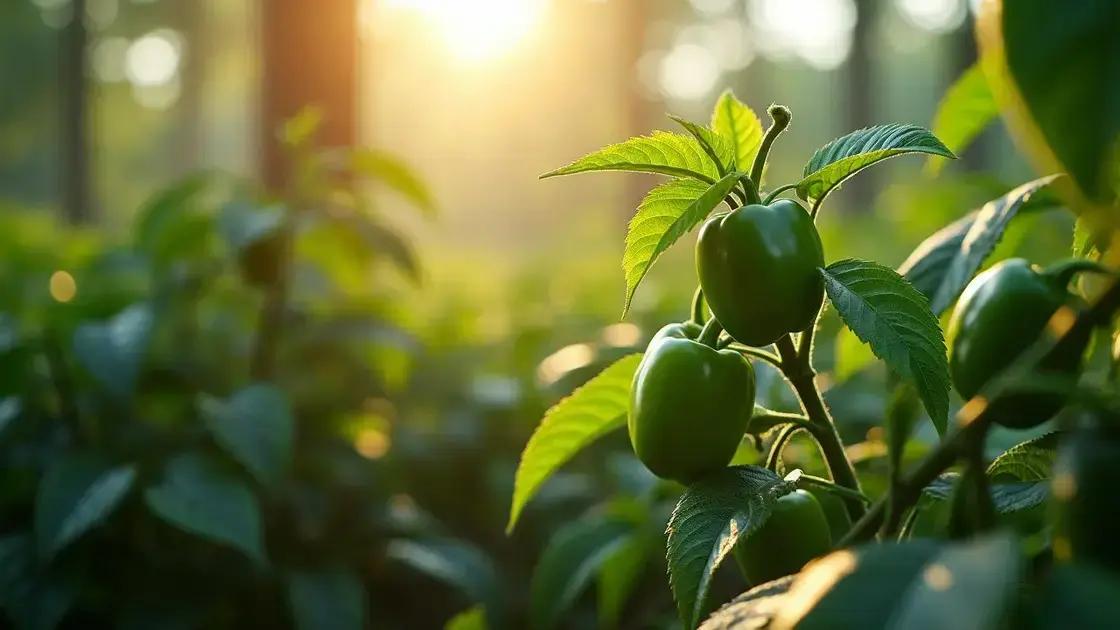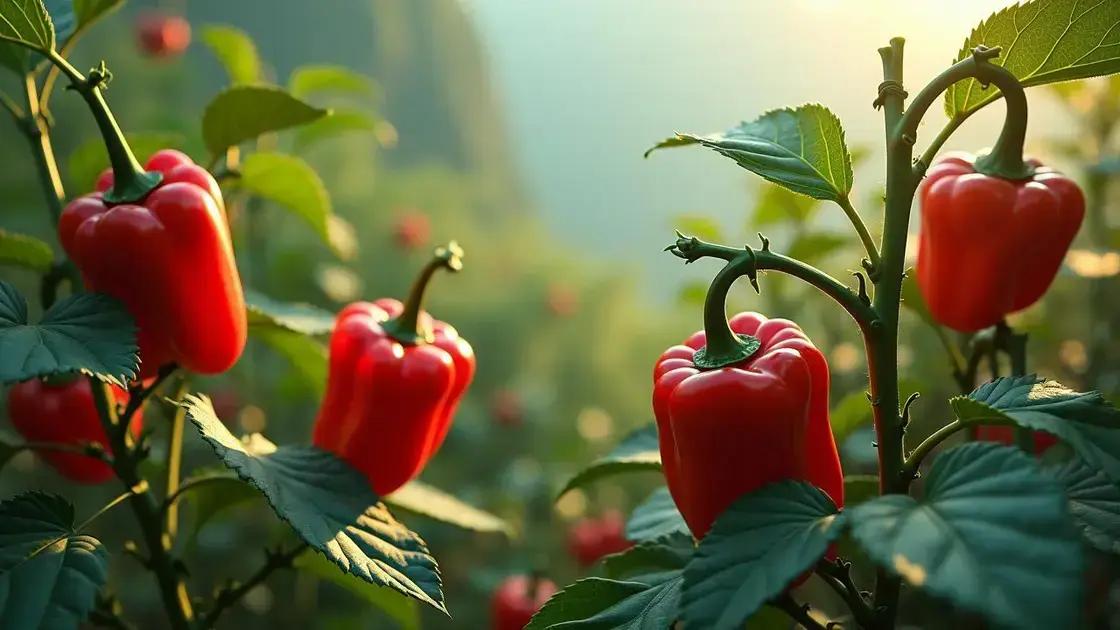How to Care for a Bell Pepper Plant: 5 Essential Tips for Success
How to care for a bell pepper plant can be a rewarding challenge, filled with vibrant colors and delicious produce. With the right knowledge, you can transform your garden into a paradise of bell peppers. Discover the secrets to lush greens and bountiful harvests while exploring the essentials of care and maintenance.
Table of Contents
ToggleEssential watering schedule for bell pepper plants
Essential watering schedule for bell pepper plants is crucial for fostering healthy growth and maximizing yield. Understanding the ideal watering routine can lead to vibrant, productive plants. Consistent moisture allows bell peppers to thrive, but it’s important to ensure they are neither overwatered nor underwatered.
Here are key points to keep in mind:
- Water frequency should generally be 2-3 times per week.
- Check soil moisture before watering; the top 1-2 inches should be dry.
- During hot weather, increase frequency to prevent stress on the plants.
- Morning is the best time to water, allowing plants to absorb moisture and minimizing evaporation.
Factors influencing watering schedule
Several factors can impact how often you need to water your bell pepper plants:
- Soil type: Sandy soils drain quickly, requiring more frequent watering, while clay soils retain moisture longer.
- Plant size: Larger plants require more water due to a bigger root system.
- Temperature: Hot days increase water evaporation, requiring adjustments in your schedule.
- Growth stage: Young plants need less water compared to mature plants in the fruiting stage.
Watering during flowering and fruiting stages
Paying extra attention to your watering schedule is essential during key growth phases:
- During the flowering stage, consistent moisture ensures the best pollination and fruit set.
- While fruits are developing, maintain regular moisture to prevent blossom drop and ensure juicy, sweet peppers.
By following these watering guidelines, you’ll set your bell pepper plants up for a rewarding harvest. For more gardening tips, consider exploring indoor gardening techniques for synergistic growth practices.
Understanding sunlight needs for a thriving bell pepper plant

Understanding sunlight needs for a thriving bell pepper plant is vital for successful growth. Bell peppers require plenty of sunlight to produce healthy fruits, and knowing how to manage their light exposure can significantly impact your yield.
Here are some key factors to consider when providing sunlight for your bell pepper plants:
- Bell peppers thrive with at least 6-8 hours of direct sunlight per day.
- Too much shade can lead to stunted growth and fewer fruits.
- Morning sunlight is particularly beneficial, as it helps to warm the plants and dry dew, reducing disease risk.
Identifying the best locations for sunlight
Planting your bell pepper plants in the right locations maximizes their exposure to sunlight:
- Choose open areas without tall structures or trees casting shadows.
- A south-facing garden bed typically gets the most sunlight.
- If growing indoors, place pots near south-facing windows or use grow lights.
Signs of inadequate sunlight
Watch for certain indicators that your plants may not be getting enough light:
- Leggy growth with long stems and sparse leaves.
- Fewer flowers and fruits than expected.
- Leaves turning yellow or dropping off the plant.
Ensuring your bell pepper plants receive sufficient sunlight is essential for vibrant growth and fruit production. For additional gardening tips, consider exploring indoor gardening techniques that can help enhance your plant care.
Common pests and how to manage bell pepper plant care
Common pests and how to manage bell pepper plant care are essential topics for ensuring your plants thrive. Bell peppers can attract a range of pests that threaten plant health and productivity. Being proactive about pest control is vital for a bountiful harvest.
Identifying common pests
Here are some of the most common pests that affect bell pepper plants:
- Aphids: Small, soft-bodied insects that cluster under leaves.
- Spider mites: Tiny pests that cause yellowing and speckled leaves.
- Whiteflies: Small, white insects that can weaken plants by sucking sap.
- Thrips: Tiny, slender insects that damage flowers and leaves.
Management strategies
Effective management of these pests can involve various strategies:
- Regular monitoring: Check your plants regularly for early signs of pests.
- Natural predators: Introduce beneficial insects like ladybugs and lacewings to your garden.
- Insecticidal soap: Use this eco-friendly solution to target soft-bodied insects.
- Neem oil: A natural pesticide that disrupts the life cycle of pests.
Preventive measures
Preventing pest infestations is easier than managing them after they occur:
- Practice crop rotation to confuse pests.
- Maintain healthy soil with organic matter to strengthen plants.
- Use netting or row covers to protect young plants from pests.
By understanding common pests and employing effective management strategies, you can ensure the health and success of your bell pepper plants. For more advice on optimal plant care, consider exploring indoor gardening techniques.
In conclusion
Caring for a bell pepper plant is a fulfilling endeavor that requires attention to various aspects, including watering, sunlight, and pest management. By following the essential tips outlined, such as maintaining a proper watering schedule, ensuring adequate sunlight, and effectively managing common pests, you can foster healthy plants that yield vibrant peppers. For additional tips on enhancing your indoor garden, consider exploring more resources to further elevate your gardening experience.

